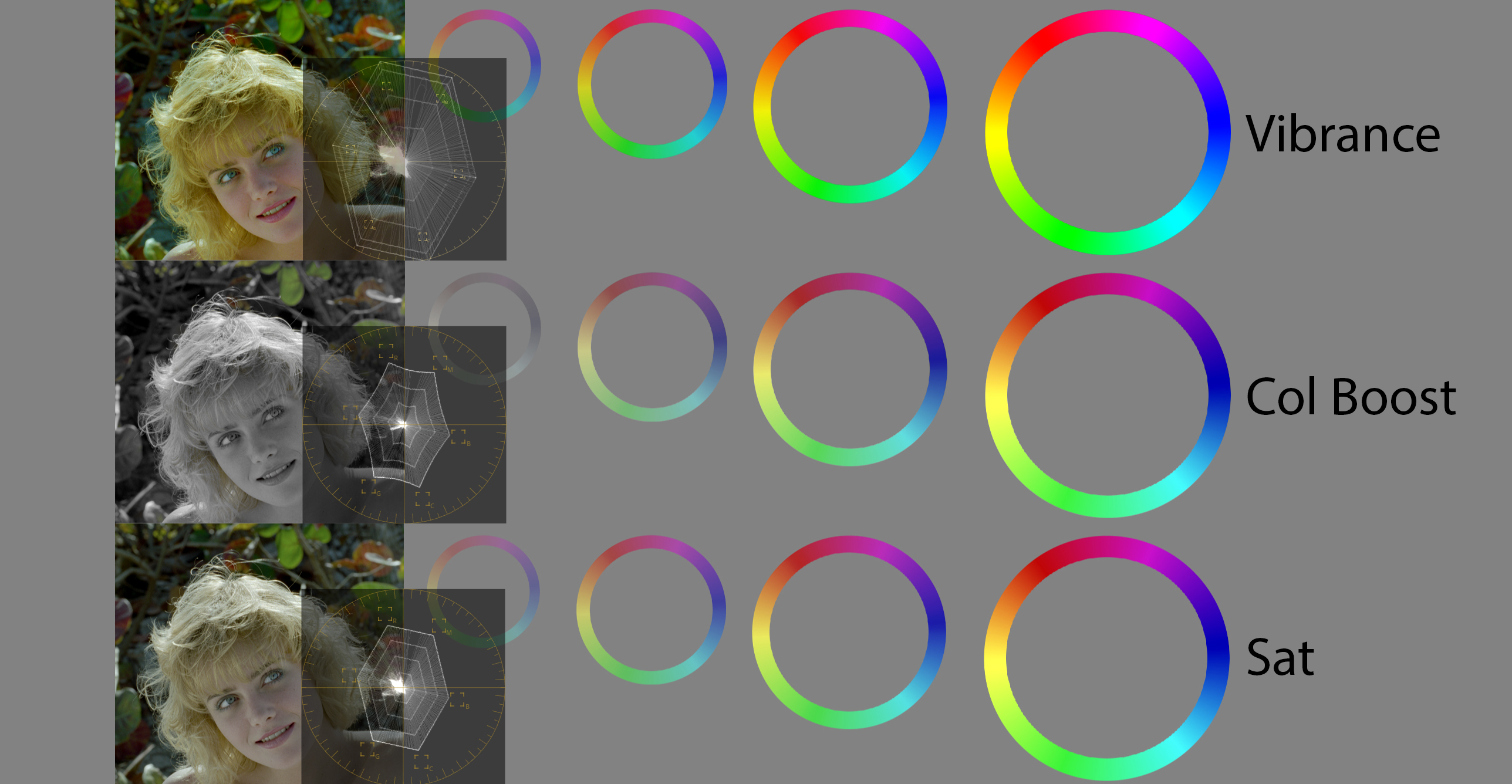Saturated
Technote
In an image which pixels saved as RGB values, “saturation” as itself do not exist. To be enabled to modify that, we must transform first to an HSL value, for example.
Once on this color model, the S channel is editable by simple math function. To scale saturation, make multiplication of the S channel pixel values.
Gain applies by multiplying in the RGB model. This rare name is a legacy of old analogical devices, where Gain controls the signal with the intent of scaling that. So to control the saturation usually a multiply function is used. But is not the only one usable in S.
Like in RGB a Lift is used (invert-multiply-invert), also exist the option to do this function to the S channel.
This parameter is called Vibrance.
Many colorists are confused with this parameter because Vibrance modifies too the luminance of colors. This change happens because Saturation is calculated in HSL space and not in a chromaticity-based model like YUV or Lab. The way to estimates saturation inside HSL is about an inexact criterion, where one color is considered full saturated while one of his RGB channels is zero.
Another function over the S channel is Add. This one does the same that Offset applies in RGB. But over S, the results are very different.
DaVinci Resolve calls this parameter as Color Boost. But it is not equivalent to Vibrance!
The name of the parameter Col Boost brings to colorists a false meaning (also the user manual describes wrong) about this control considering that similar to Vibrance, but it is wrong, since really this parameter do an offset over the saturation of all values, by clipping in 0 and 100 values, like happens with Offset in RGB.
